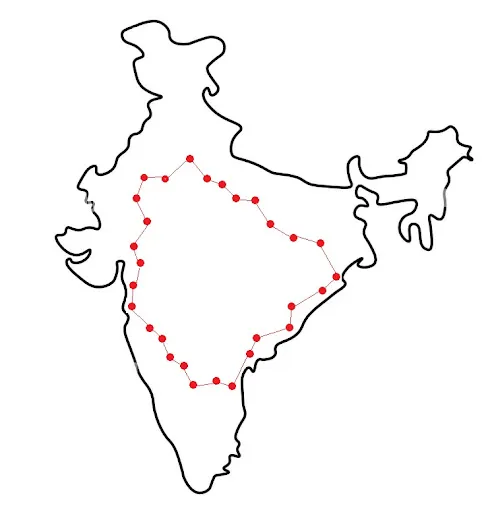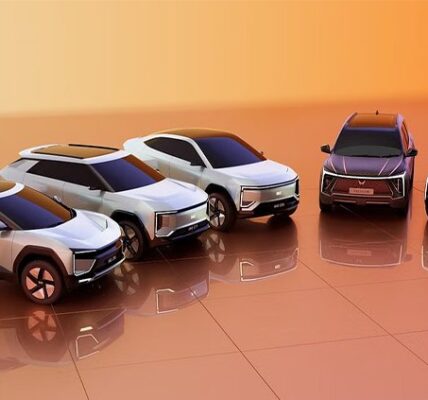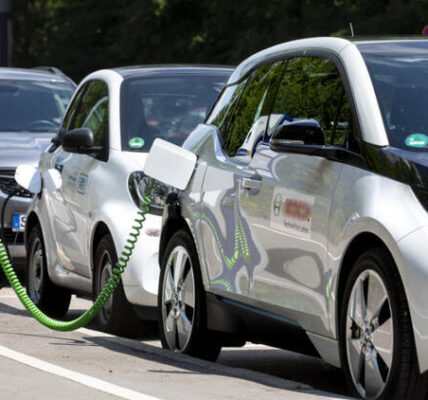Growing up in the relatively greener part of Mumbai in Borivali next to the Sanjay Gandhi National Park, I always appreciated clean fresh air. Later, when I found out just how badly vehicular emissions affect air quality, I started researching alternative, more sustainable modes of transportation. I had my apprehensions about the real world driving range of electric vehicles (EVs).
To test it out, a small group of us kicked off The SunPedal Ride in 2016. We completed 7,424 kilometres in 79 days on a solar powered electric bicycle. This journey had a mention in the Guinness Book of World Records for the longest journey on a motorised bicycle. My team and I then decided to undertake an endurance journey in an electric car. For this project, the vehicle was MG ZS EV 2022 edition, provided kindly by MG Motor India.
We covered 8,849 kilometres in 70 days with 35 city stops and more than 40 outreach events in educational institutions along the Golden Quadrilateral route. Starting from Delhi on 30 September 2022 and going clockwise, this is the route we followed: Delhi-Agra-Kanpur-Lucknow-Varanasi-Obra-Dhanbad-Durgapur-Kolkata-Kharagpur-Balasore-Bhubaneswar-Gopalpur-Vizag-Kakinada-Vijayawada-Ongole-Nellore-Chennai-Vellore-Bengaluru-Davangere-Belagavi-Kolhapur-Pune-Mumbai-Vapi-Surat-Baroda-Ahmedabad-Udaipur-Jodhpur-Ajmer-Jaipur-Gurugram-Delhi.
These are the big learnings from our journey
Broadly, there are two methods to charge your EV: AC (Alternating Current)-based charging occurs at lower currents and takes much longer versus DC (Direct Current) charging, which occurs at relatively higher currents and takes less time to charge.
Your EV comes with a charging cable that can be plugged into any 16 amp socket with AC electricity supply. Look for the 3-pin heavy-duty socket, which is usually used to run heavy appliances like air conditioners, geysers, water coolers. Your home will have this AC electricity supply. On our journey, the EV took 20+ hours for a full charge using this AC charging cable. (Tip: carry an extension cord: You will need it on most occasions to access the 16 Amp plug point near the car parking area. I carried an 8m extension cord.)
On the other hand, DC Fast Charging cannot be done at home, but only at dedicated fast charging stations, which come with their own charging cables. DC Fast Charging time depends on many factors such as the power rating of the charger and maximum current allowed by the Battery Management System of the electric car. So the charging time could differ at different charging stations with different electric cars, but typically took but typically took 3+ hours for a full charge in my journey.
On our trip, the distance traversed in a day was never more than the real-world range of the EV (which is approximately 350km on a single charge). This explains why I used AC slow overnight charging with a 16 amp plug point almost 90% of the time in this journey, which left me enough juice in the battery for the next day’s journey. There were only 12 instances where I used a DC Fast Charger in this entire journey.
Your mobile phone network provider can be a key factor when you use a DC Fast Charging station on the road. If you are relying on your mobile phone network to start the DC Fast Charging via the mobile app, ensure that you have a good network provider. In my experience, Vodafone Idea did not have a good network coverage in the UP, Bihar, Andhra Pradesh stretches of the journey. Airtel and Jio are much better in terms of network coverage.
The electric car gave approximately between 300-350km on a single charge at normal speeds without compromising on the driving style. Lower speeds will generally give a higher range due to the lesser air drag and rolling resistance. Regeneration is a method where you can recover the otherwise lost energy during braking. This feature is present in all electric vehicles today. It comes into play majorly in city driving due to frequent braking and hence, it contributes to increased range in city driving conditions. Generally speaking, the range of the EV is higher in the cities as compared to highways. We even touched speeds of 150km/hr in our journey for brief periods, but not recommended since the range could drastically reduce. Switching-off the air conditioning can give an extra 20-30km of range. Noise-free cabin is a boon for the occupants of the electric car. But we realised that we needed to honk at pedestrians and motorists more than usual for safety reasons.
Communities of EV owners on social media have been very helpful on my journey. Members shared information and experiences and some even kindly offered to charge my EV at their location. One of the most active and helpful EV users group on Telegram is called PluginIndia— it is open to all and accessible without an invite link. The Youtube Channel of PluginIndia Electric Vehicles is also very useful for real-life EV owner review videos. There are individual EV OEM groups like the MG ZS EV owners group, Tata Nexon EV Users groups on Whatsapp. An open discussion forum on Team BHP can also be useful.
One will be paying on an average Rs18/kWh to charge at a DC Fast Charging station. This translates to roughly Rs3/km for the MG ZS EV electric car that I was driving. Now, this is typically double than what you ideally pay for your home/office electricity AC supply depending on your state electricity tariff.
For those interested, here is a quick calculation, assuming you are charging the car using the AC 16 amp plug point at home:
The electric car has a 50.3 kWh battery, which means that it consumes 50.3 units of electricity for a full charge. Now, let’s assume that your home electricity tariff is Rs10/unit. This means it costs Rs503 for a full charge. Let’s assume that one full charge of this electric car gives 300km as real world range—this calculates to less than Rs2/km
An equivalent ICE (Internal Combustion Engine) vehicle consuming petrol/diesel as fuel can have a running cost of more than Rs6/km.
This is where EVs usually have an advantage over ICE vehicles as a big cost advantage. Hence, buying an EV should be a long term investment decision since the more you run your EV, the more you will save your money. As a summary of total cost of fuel in this 8,000-km journey, I paid a total of approximately Rs14,000 electricity (with a combination of 80% AC slow charging and 20% DC fast charging). If it were an equivalent performance ICE vehicle, the fuel cost would have been easily greater than Rs50,000.
With advance planning to factor in the additional charging time and accessibility or chargers, long distance intercity journeys on electric cars are definitely doable today. It feels like magic that you have a ‘full tank’ in the EV by the time you wake up in the morning once you plug it in overnight. Access to electricity is easier than access to usage of petrol. One cannot have a tank full of petrol/diesel at home, unlike electricity, to fuel the vehicle. There are more pros than cons today to own an electric car. The battery technology is evolving and the e-mobility sector is very nascent and growing at the moment. There is only going to be a tailwind in this sector in the coming years. My recommendation for anyone listening: consider an EV as your next vehicle–it’s better for the environment and for your pocket.







